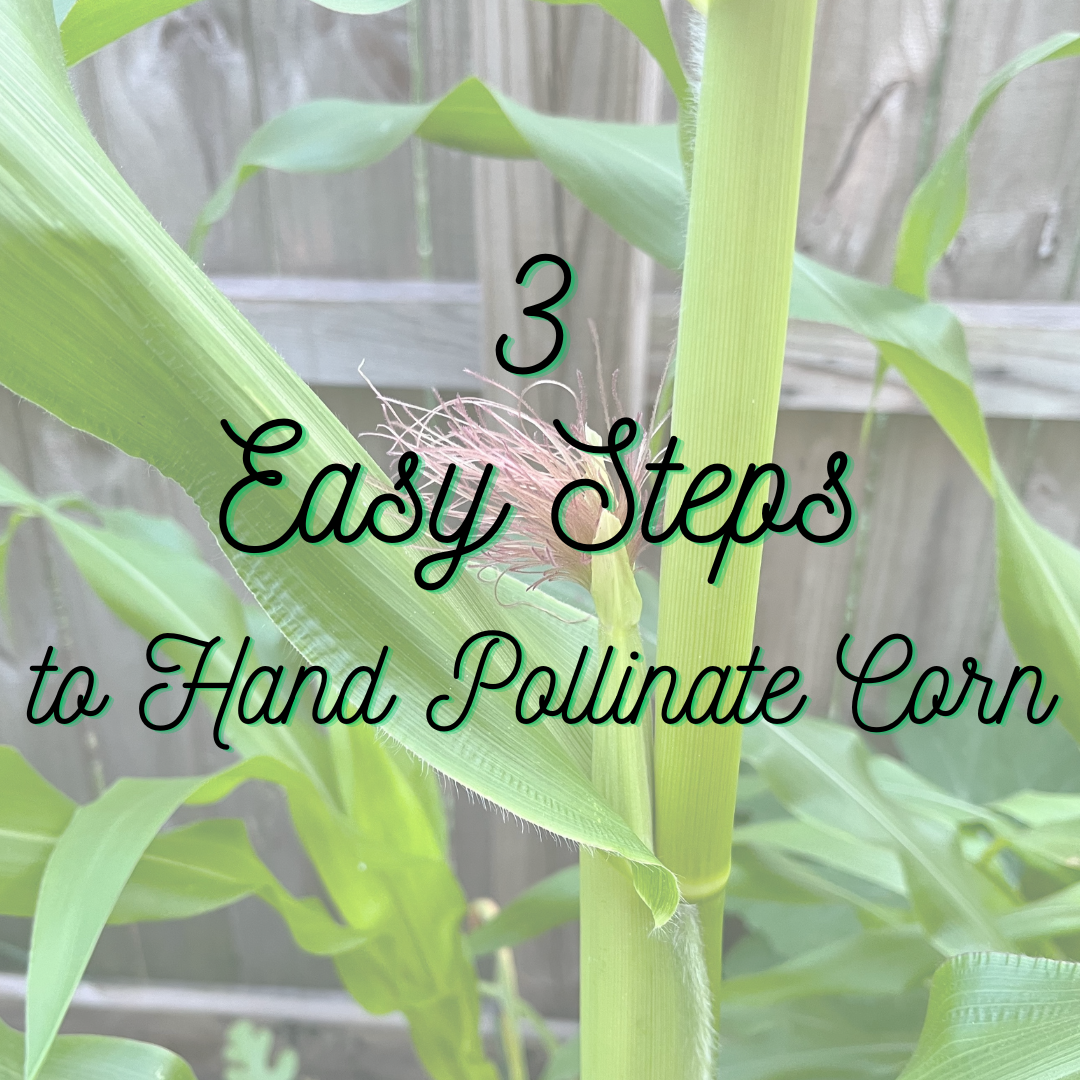We have our first corn tassels!

I’ve always wanted to grow corn, so I decided to plant a few seeds in our raised bed and see what happened. I was pleasantly surprised when corn started to grow. And then suddenly there were tassels and silks and I realized I needed to figure out what to do next to make sure I actually get to eat the corn I grew.
Corn is planted in large fields on purpose. This is because corn is air pollinated – the pollen on the tassels is blown by the wind and lands on the silks of the ears. Each silk is attached to one kernel of corn. So, that’s a lot of pollination that needs to happen!
When you plant in a small garden, the chances of wind blowing pollen into the silks are very slim. In these situations, we need to take pollination into our own hands. Thankfully, it’s really easy.
You’ll know your corn is ready to hand pollinate when there are anthers on the tassels and silks on the ear of corn.

Here are three steps to hand pollinating your corn:
- Wait until the morning, after the dew has dried and it’s not a damp day. Too hot temperatures cause the pollen to become less viable, and too damp conditions make it sticky. Mid-morning tends to be the best time; both dry and not too hot.
- Cut one tassel off the top of a plant. You don’t need all of them, just one! You’re going to repeat this process over the next couple of days, so you don’t want to cut everything off. Be gentle, try not to shake the pollen off the tassel while cutting.
- Brush the tassel over the silks. You can also lightly shake the tassel over the silks to drop more pollen.
Then, the next day, do it all again!



